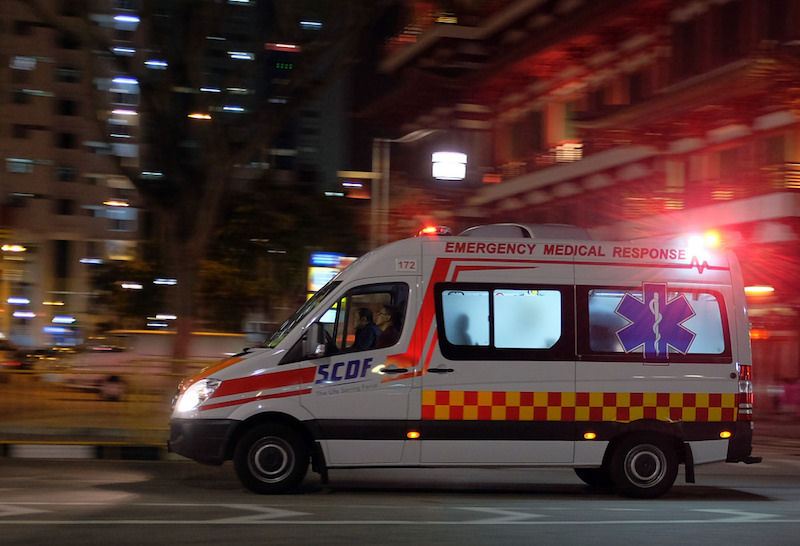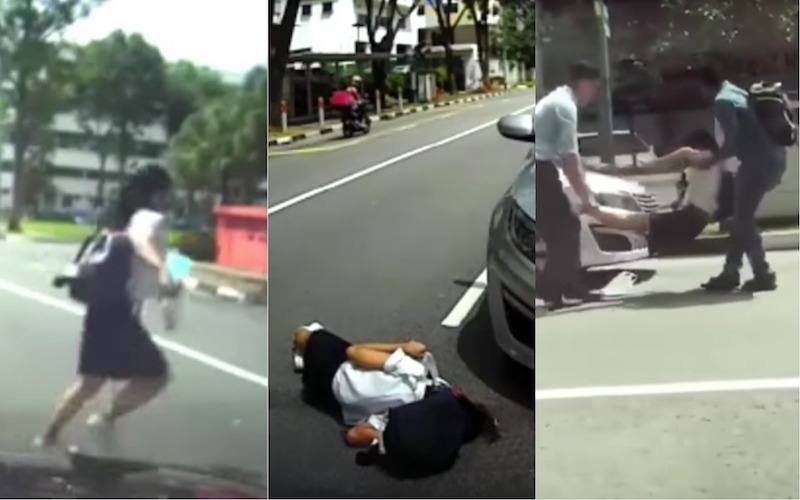On Monday, a ghastly accident took place along Ubi Road 1, in which a teenage secondary school student was sent flying into the air after a collision with a car.
The moment of impact was captured in two shocking dash cam clips, which subsequently went viral on Facebook (be warned; the footage linked here is highly graphic). The 16-year-old can be seen looking out for traffic before crossing the road, but she didn’t manage to spot a red Suzuki Swift barreling towards her. She tried to rush across the road but was promptly knocked down by the car, leaving her lying motionless on the road.
Before she was conveyed (conscious) to the hospital, concerned passersby picked up the limp victim and placed her at the side of the road.
Noble as it is to help someone in dire need of medical assistance, this should be known to everyone as the wrong move.
A medic’s pointers

“They’re already doing something wrong by moving the victim,” said an emergency medic who spoke to Coconuts Singapore. As a medic in a fire station in Singapore for eight years, it’s fair to say he’s seen and attended to a proper share of road traffic accidents — so he knows what bystanders should or should not do.
Acknowledging that many would think it’s a good idea to move the girl to a safe position to prevent another accident, the medic advised that what folks should do instead is to control traffic to ensure the ambulance can have easy access to the victim.
“In these kinds of accidents — when you could see the patient being flung across the road — we will always need to take extra spinal precautions because we don’t know what the impact did to the neck or spine,” he said.
The first thing bystanders should always do is to call the emergency number for an ambulance and ensure that the victim is not in any further danger by alerting other road users in the vicinity.
“Ambulance crews are well equipped and trained to move the patient from the accident site into the ambulance while minimizing the risk of further spinal injury,” he mentioned.
But of course, if any member of the public is trained in pre-hospital spinal immobilization, they could assist by preventing further movement of the victim’s head before the arrival of paramedics.
“If not, it’s just best to wait for help.”




